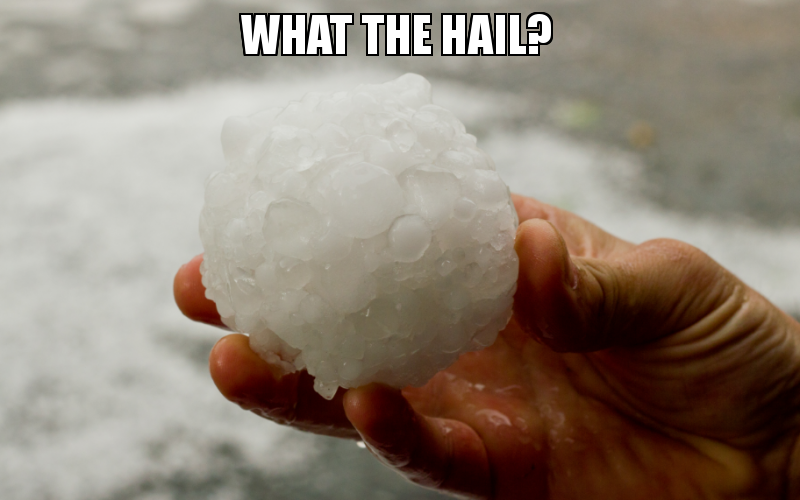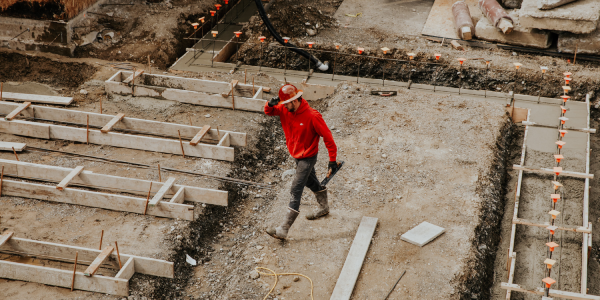‘What the Hail?’ Part 2: Repairing Hail Damage

by Aaron Thompson, EagleView Technologies -
Roof hail damage on homes and commercial properties is the most common aftereffect of a hailstorm. In Part 1 of this post we discussed the effects of hail in terms of property damage and insurance claims.
Hailstorms can result in millions of dollars in damage to homes and commercial properties, and they are hazardous to vehicles left outside. While the costs associated with hailstorm damage are covered by most insurance carriers, property owners are tasked with finding a reliable contractor to perform the repairs.
“Virtually visible damage everywhere.”
After the devastating hailstorm in Colorado Springs, Colorado, at the end of July, property owners inundated their insurance carriers with calls to file claims. Many homeowners are still waiting for full assessments.
According to the Colorado Springs Gazette, Stephen and Elizabeth Beyer are two such homeowners. The couple had just replaced the roof on their home two weeks before the storm ravaged the area. Now they need to have it replaced again, along with the broken siding, screens, and skylights that resulted from the hail.
Yet Colorado Springs isn’t the only location to see extensive hail damage so far this year. Pine Bluffs, Wyoming, 40 miles east of Cheyenne, saw hail accumulation up to six inches deep and winds of up to 90 miles per hour after a storm hit on July 27. The town’s 1,200 residents also lost power for about three hours. Although the golf ball-sized hail hit around 500 homes in Pine Bluffs, no injuries were reported.
“It looks like the storm was a direct hit on every structure in town,” Guy Cameron, Director of Wyoming Homeland Security, told the Wyoming Tribune Eagle. “There is virtually visible damage everywhere,” he said of the town’s roofs, siding, windows, lawns, and gardens.
Local home and business owners described the storm as one of the scariest they’d ever seen. The hail was so strong it had stripped insulation, vinyl siding, and even paint from homes and businesses. During cleanup efforts in the days that followed, Pine Bluffs residents carefully cleared away the shards of glass and wood splinters littering their lawns.
Repairing the damage
While they wait for repairs, homeowners have to check inside and outside the home for broken glass and board up any shattered windows. Homeowners with even minor roof damage also have to watch out for ventilation issues. One roofing contractor in Colorado Springs warned residents that damage to older roof vent caps can lead to carbon monoxide buildup in an attic or crawlspace. Carbon monoxide poisoning can lead to “fatigue, nausea, dizziness, headache, shortness of breath, blurred vision, and loss of consciousness,” and it can be deadly after prolonged exposure.
Roof damage on homes and commercial properties is the most common aftereffect of a hailstorm, and windows and siding can also take a serious hit. Roof damage is one of the most costly expenditures for property owners, though much of it is covered by insurance. Roofing contractors typically receive payment for repairs from the property owner’s insurance company, but the work can only begin after the property is thoroughly inspected and measured and once the supplies for repairs arrives.
Such intense hailstorms have also caused backlogs among roofers, who are struggling to meet the demand for repairs. The process for replacing a roof is also labor intensive and requires precise supply orders.
To replace a roof, roofers need to have accurate measurements done as quickly as possible. Most often, these measurements are done by hand, which can lead to human error. They also require workers to go up on the roof, which can be dangerous depending on the roof’s condition. On construction sites, falls are the most common cause of death, accounting for nearly 40% of deaths (359 of 899) in 2014 alone.
After a major hailstorm or other extreme weather event, a contractor may get bogged down inspecting and measuring roofs, slowing down workflow and forcing customers to wait months for repairs to begin.
Roof measurement reports give an aerial view of homes, as well as a 3D rendering of the home, so roofing contractors have access to information about a roof’s area, length, and pitch as well as any eaves, flashing and step flashing, hips, rakes, ridges, and valleys on the roof. This information allows contractors to place orders for exactly the amount of supplies they need without having to worry about overages or extra site visits. Wall measurement reports are similar in scope, only they are more appropriate for replacing siding.
Why is this accuracy so important? For contractors, having the right measurements ahead of time means they won’t need to order more supplies halfway through a project, and they won’t be stuck with extra product at the end of a job, either.
That peace of mind can help roofers make it through a hailstorm’s aftermath without sacrificing time or job quality. But most important of all: the sooner those repairs are completed, the faster life can go back to normal for home and business owners.
About EagleView
EagleView Technologies is the unparalleled provider of aerial imagery, data analytics and GIS solutions serving the commercial, government and public utility sectors. Visit them here.





-2025-xtv-mls-tour-2.png)

















Comments
Leave a Reply
Have an account? Login to leave a comment!
Sign In